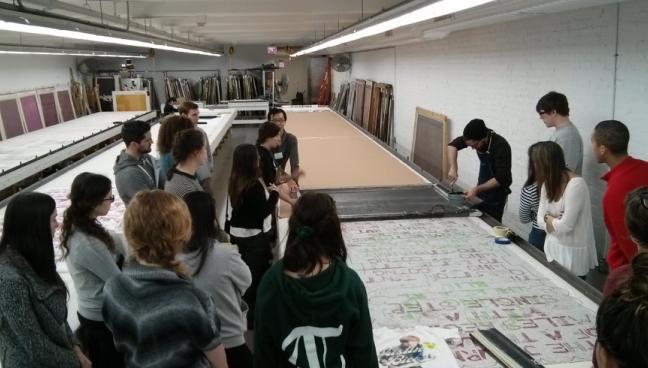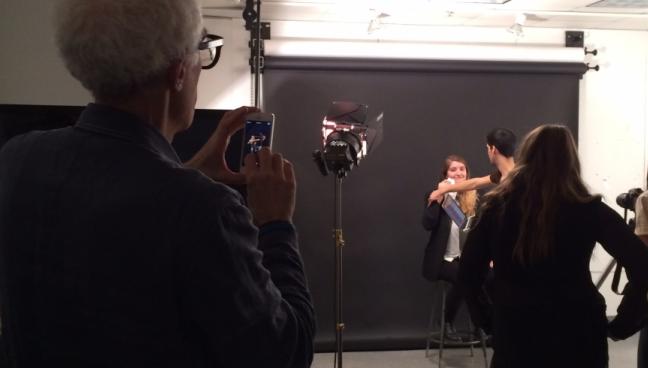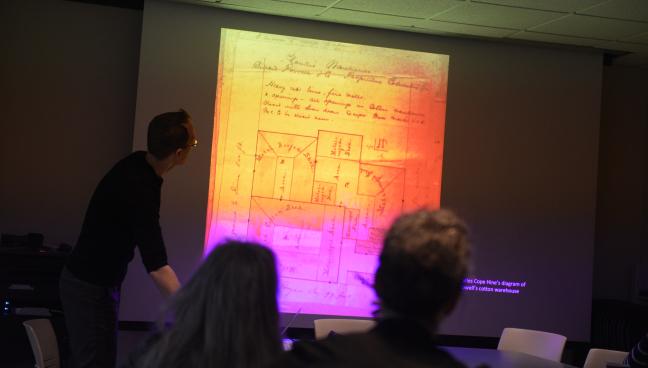Program
Visual Studies at the University of Pennsylvania prepares students to forge innovative connections across the disciplines that study vision and images. Students acquire a critical awareness of seeing and the problems and possibilities for investigating, thinking, and writing about seeing in the 21st century.
Fundamentally interdisciplinary, the Visual Studies Program partners with the Departments of Philosophy, Psychology, History of Art, Fine Arts, and Architecture. Students may also find interest in Penn Programs such as Cinema Studies and Gender, Sexuality, and Women's Studies or outside of the School of Arts and Sciences in the Annenberg School of Communications, and the School of Engineering and Applied Sciences.
All Visual Studies students select one of three concentrations within the major:
Sector A explores the nature of visual experience by combining scientific and philosophical approaches to perception. While seeing feels immediate and effortless, it relies on complex processes involving lenses, images, neurons, and the brain’s interpretation of light. This sector examines how these processes give rise to conscious experience, and how that experience carries meaning, ethical weight, and aesthetic value.
Courses in Sector A investigate questions from both vision science and philosophy. Scientific topics include how color perception works, whether color is real or mind-dependent, and whether we perceive the world directly or infer it from retinal images. Philosophical questions explore the role of vision in art: What does it mean to depict something visually? What makes visual art good or meaningful? What value does visual experience contribute to aesthetic and ethical understanding? Humanistic reflection, especially on visual art, also offers insight into perception itself.
Sector A is ideal for students interested in both how we see and what seeing means—those who want to bridge empirical knowledge with conceptual inquiry. It develops a unique skillset that unites science and humanities and complements the perspectives offered in Sectors B and C.
Sector B focuses on the historical, cultural, and social dimensions of vision and visual media. It connects the philosophical/scientific study of perception (Sector A) and the studio-based making of images and objects (Sector C) with the broader cultural frameworks that shape how we see and interpret images.
Courses begin with core classes in art history and media studies, then expand into electives that allow students to explore intersections with Africana Studies, Communication, Marketing, Religious Studies, and more. Students may also engage with philosophical theories of art and perception, or with hands-on artistic practices to examine the making of images. This sector emphasizes the cultural meanings and contexts that inform how vision works across time and societies.
Sector B is ideal for students curious about how images function in different cultures and historical moments, and how vision itself is shaped by context. It fosters interdisciplinary thinking and offers a wide range of pathways depending on individual interest and imagination.
Sector C centers on the creative and material dimensions of vision through art-making, design, and architecture. This sector emphasizes how conceptual and research-based thinking can be realized through form—whether in traditional media, digital tools, or time-based practices. Courses span Fine Arts, Design, and Architecture, and combine studio work with critical seminars.
Students in Sector C engage with visual practice not just as skill or craft, but as a method of inquiry into social, cultural, and environmental issues. Instruction is supplemented by critiques, workshops, and interactions with visiting artists and designers, helping students develop independent research methods and critical awareness.
Sector C is ideal for students who want a strong making component within Visual Studies, whether they’re aspiring artists looking for a deeper theoretical grounding, or researchers and theorists who want to explore visual thinking through hands-on work. Its content is akin to a minor in FNAR or Design and offers an applied counterpart to the more analytical approaches of Sectors A and B.
Each year the program hosts a Visual Studies Lecture Series designed to encourage student interactions with Penn Faculty and internationally acclaimed artists, designers, historians, engineers. philosophers, and psychologists committed to interdisciplinary practice. The lecture series also provides Visual Studies seniors with invaluable opportunities to have in-progress thesis critiques with visiting artists and scholars.
In addition to the Visual Studies Curriculum, majors enjoy activities organized by the Visual Studies Undergraduate Advisory Board (UAB). The UAB organizes film screenings, museum and gallery visits in Philadelphia, New York City and Washington D.C. as well as social dinners or teas. These events provide the opportunity for majors to continue the conversations that begin in the classroom and to inspire new ones, as well as to see old and new art and design first hand.
Check out our promo book on the Visual Studies Program, featuring insights from students on what Visual Studies means to them, along with a glimpse into the exciting careers our graduates pursue.




